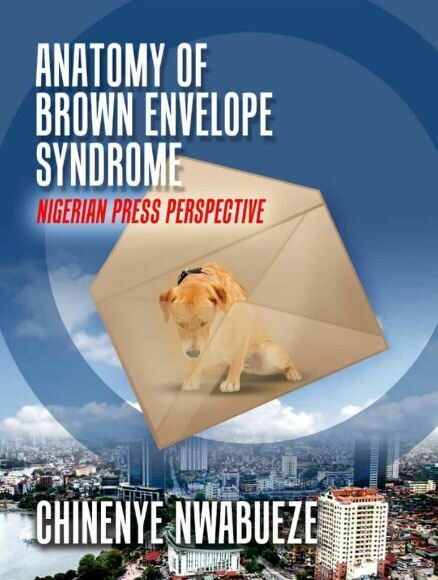Anatomy of Brown Envelope Syndrome – Nigerian Press Perspective
₦900.00₦1,950.00
- USD: $0.59
This book x-rays the brown envelope syndrome in Nigeria with a view to finding out the genesis of the trend, what has made the practice endemic in the Nigerian media sector and how it has affected the image of the profession in the country. It is an anatomy of the brown envelope syndrome in Nigeria, which takes a close look at the perceived deceptive power of the syndrome, its negative effects on stakeholders in the media industry and possible solutions to the problem. It is written from the point of view of an ex-journalist who had first-hand experience of the brown envelope syndrome and has seen possible practical approaches to curbing the trend if sincerely and effectively implemented.
Author: Chinenye Nwabueze
Year of Publication: 2020
Publisher: TopShelve Publishers
Number of Pages: 265
ISBN: 978-97-54047-8-4
File Size: 1.61 MB
 University Books / Pre-sale Questions
Need Help? Contact Us via WhatsApp
University Books / Pre-sale Questions
Need Help? Contact Us via WhatsApp
Preface
The mass media in Nigeria constitute a vital sector of the nation. Since independence till date, the mass media have effectively played their role of shaping public perception of events, bringing about social change and acting as watchdogs of the society. In fact, the role the mass media played in bringing military dictatorship in Nigeria to an end further gives credence to their ability to serve as agents of change. This is apparently why priority is given to contributions of the media when crucial issues that affect the future of the nation are in the court of public opinion.
However, the nature of the larger society in terms of value systems, moral and economic bottle-necks, is taking its toll on the mass media, giving rise to a trend which is having a devastating effect on the credibility of the journalism profession. This trend is called the ‘brown envelope syndrome’. It involves a gift-giving and acceptance culture that has seemingly become a norm in the journalism profession and has also assumed the nature of a cancer that is eating deep into the profession.
This book x-rays the brown envelope syndrome in Nigeria with a view to finding out the genesis of the trend, what has made the practice endemic in the Nigerian media sector and how it has affected the image of the profession in the country. It is an anatomy of the brown envelope syndrome in Nigeria, which takes a close look at the perceived deceptive power of the syndrome, its negative effects on stakeholders in the media industry and possible solutions to the problem. It is written from the point of view of an ex-journalist who had first-hand experience of the brown envelope syndrome and has seen possible practical approaches to curbing the trend if sincerely and effectively implemented.
The author’s postulations with regards to how brown envelope culture penetrated the Journalism profession, its effects and what could be done to salvage the situation, are presented in nine chapters. The first four chapters dwelt on an understanding of what Brown Envelope is all about, its possible origin as traced by the author, what it is and what it is not, its definition and forms, and why journalists accept brown envelope.
The last five chapters X-rayed the ways of saving the journalism profession from the power of brown envelope syndrome. Such topics as power of brown envelope, that is, what it does for the givers or how it works
on the reporter, the negative effects of the brown envelope syndrome on the profession, the individual reporter and the society at large, were looked at. Also discussed are the way out of the ugly trend and how to break the brown envelope barrier which seemingly prevents easy access to the media.
The author has used his experience and research work, including what other professionals in the field of journalism have said concerning the brown envelope syndrome, to make this contribution to the developmentoftheprofession.Forall“anti-brownenvelope”campaigners, this book is a worthwhile first step into the journey of 1000 miles with a view to putting an end to the ugly trend. Practicing journalists, media owners, student journalists, corporate affairs officers, public relations executives, corporate organizations and other individuals who patronize the media in one way or the other, will find this book useful as a veritable tool for stopping, dodging, discouraging, tackling, avoiding or breaking the barriers posed by the culture of brown envelope in journalism.
Additional information
| Author | Chinenye Nwabueze |
|---|---|
| Year of Publication | 2020 |
| Publisher | TopShelve Publishers |
| Number of Pages | 265 |
| ISBN | 978-97-54047-8-4 |
| File Size | 1.61MB |




Reviews
There are no reviews yet.